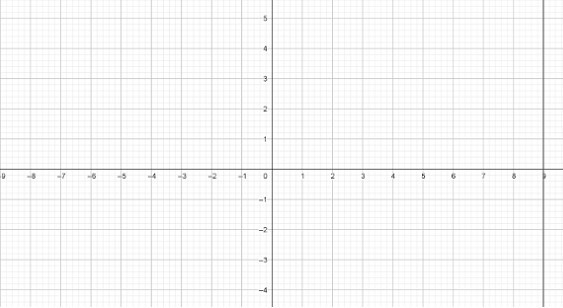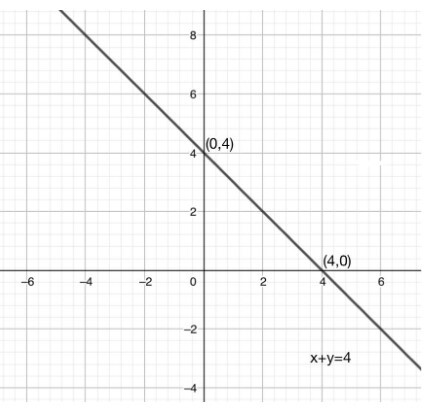
 Data Structure
Data Structure Networking
Networking RDBMS
RDBMS Operating System
Operating System Java
Java MS Excel
MS Excel iOS
iOS HTML
HTML CSS
CSS Android
Android Python
Python C Programming
C Programming C++
C++ C#
C# MongoDB
MongoDB MySQL
MySQL Javascript
Javascript PHP
PHP
- Selected Reading
- UPSC IAS Exams Notes
- Developer's Best Practices
- Questions and Answers
- Effective Resume Writing
- HR Interview Questions
- Computer Glossary
- Who is Who
Coincident Lines
Introduction
Coincident lines are the lines that are on top of each other. The term "coincide" refers to something happening at the same time. In mathematics, coincident lines are lines that lie on top of each other so that when we look at them, they appear to be a single line rather than double or multiple lines.
Parallel lines are lines that are parallel to each other and have a predetermined distance between them. Perpendicular lines, on the other hand, are lines that intersect at a 90- degree angle. However, parallel and perpendicular lines do not coincide. In this tutorial, we will discuss coincident lines.
Lines
A line is a one-dimensional shape that has no breadth and can go on forever in both directions. It is composed of an endless number of nearby points. According to Euclid, the line has an infinite width. It is represented by the linear equation $\mathrm{ax\:+\:by\:=\:c}$ in a cartesian plane.
Types of Lines
There are four types of lines in geometry. They are
Horizontal Lines
Vertical Lines
Parallel Lines
Perpendicular Lines
Transversal Lines
Horizontal Lines:
A horizontal line is a straight line that runs from the left to the right or from the right to the left. A line is said to be horizontal in coordinate geometry if two points on the line have the same y- coordinate points.
It is derived from the word "horizon." It denotes that horizontal lines are always parallel to the horizon or x-axis.
Vertical lines:
In the coordinate plane, lines parallel to the Y-axis are called vertical lines. This is a straight line that is drawn from top to bottom and bottom to top. All points on this line have the same x coordinate value.
If you draw the point of the function x = a on the coordinate plane, you can see that connecting the coordinates gives a vertical line.
Parallel Lines:
Parallel lines are two lines that run in the same direction without intersecting or colliding. These lines can be stretched indefinitely without ever coming together or intersecting.
Perpendicular Lines:
In mathematics, a perpendicular is defined as a straight line that forms a right angle (90 degrees) with other lines. That is, if two lines intersect at right angles, the lines will be perpendicular to each other.
Transversal Lines:
Any line that crosses two straight lines at different locations is referred to in geometry as a transversal. The parallelism of two or more additional straight lines in the Euclidean plane is established via transversals. Two lines cross it at separate locations. Transversal intersection creates a number of angles
Coincident Lines
Lines that coincide are those that are on top of each other. They are not parallel or perpendicular lines, but they are very similar. In other words, these are the lines where one line completely covers the other line, making it impossible to tell that there are two lines.
Equations of Coincident Lines
The Equation of Coincident Lines in the standard equation is $\mathrm{y\:=\:mx\:+\:b}$, where m is the slope and b is the y-intercept.
Coincident Lines Equation: The equation for coincident lines is $\mathrm{ax\:+\:by\:=\:c}$. There can be no other interruption between two lines that are exactly top on top of each other.
Solved Examples
1) Draw the graph of the following equation: ? = ?
Answer The vertical line x=9 passes through the X-axis, at a 9 units distance on the right side of the origin and parallel to the Y-axis, and since the angle between the lines? = 9 and the y-axis so both lines are perpendicular.

2) If the slope of two perpendicular lines is m and 3 then find the value of m
Answer We know that if two lines are perpendicular to each other then the product of their slopes is equal to -1. that is $\mathrm{m.n\:=\:-1}$
$$\mathrm{3\times\:m\:=\:-1}$$
$$\mathrm{\Longrightarrow\:3\times\:m\:=\:-1}$$
$$\mathrm{\Longrightarrow\:m\:=\:\frac{-1}{3}}$$
Hence the slope of the other line is $\mathrm{\frac{-1}{3}}$
3) If the equation of a line is $\mathrm{y\:-\:-2x\:+\:8}$ then find the slope of the line which is perpendicular to the given line.
Answer It is given that the equation of the line is $\mathrm{y\:-\:-2x\:+\:8}$ so the slope of this lines will be -2.
We know that if two lines are perpendicular to each other then the product of their slopes is equal to -1 that is $\mathrm{m.n\:=\:-1}$
$$\mathrm{-2\times\:n\:=\:-1}$$
$$\mathrm{\Longrightarrow\:-2\times\:n\:=\:-1}$$
$$\mathrm{\Longrightarrow\:n\:=\:\frac{-1}{-2}}$$
$$\mathrm{\Longrightarrow\:n\:=\frac{1}{2}}$$
Hence the slope of the line which is perpendicular to the given line is $\mathrm{\frac{1}{2}}$
4) Draw a graph of $\mathrm{x\:+\:y\:=\:4}$
Answer Given equation is ? + ? = 4 now take the different value of x to get different value of y.
| x | 0 | 1 | 2 | 4 |
| y | 4 | 3 | 2 | 0 |
Now locate each pair of points and connects all the dots to get the graph of $\mathrm{x\:+\:y\:=\:4}$

Conclusion
Two lines that are exactly on top of each other are known as coincident lines. They are neither parallel nor perpendicular, but they are very similar. In other words, these are the lines where one line completely covers the other, making it impossible to tell that there are two lines. Both lines appear to be a single line.
FAQs
1. What do you mean by line?
A line is a one-dimensional shape that has no breadth and can go on forever in both directions. It is composed of an endless number of nearby points. According to Euclid, the line has an infinite width.
2. What do you mean by coincident lines?
Lines that coincide are those that are on top of each other. They are not parallel or perpendicular lines, but they are very similar.
3. What are horizontal lines?
A horizontal line is a straight line that runs from the left to the right or from the right to the left. A line is said to be horizontal in coordinate geometry if two points on the line have the same y- coordinate points.
4. What do you mean by parallel lines?
Parallel lines are two lines that run in the same direction without intersecting or colliding. These lines can be stretched indefinitely without ever coming together or intersecting.
5. What are vertical lines?
In the coordinate plane, lines parallel to the Y-axis are called vertical lines. This is a straight line that is drawn from top to bottom and bottom to top. All points on this line have the same x coordinate value.

